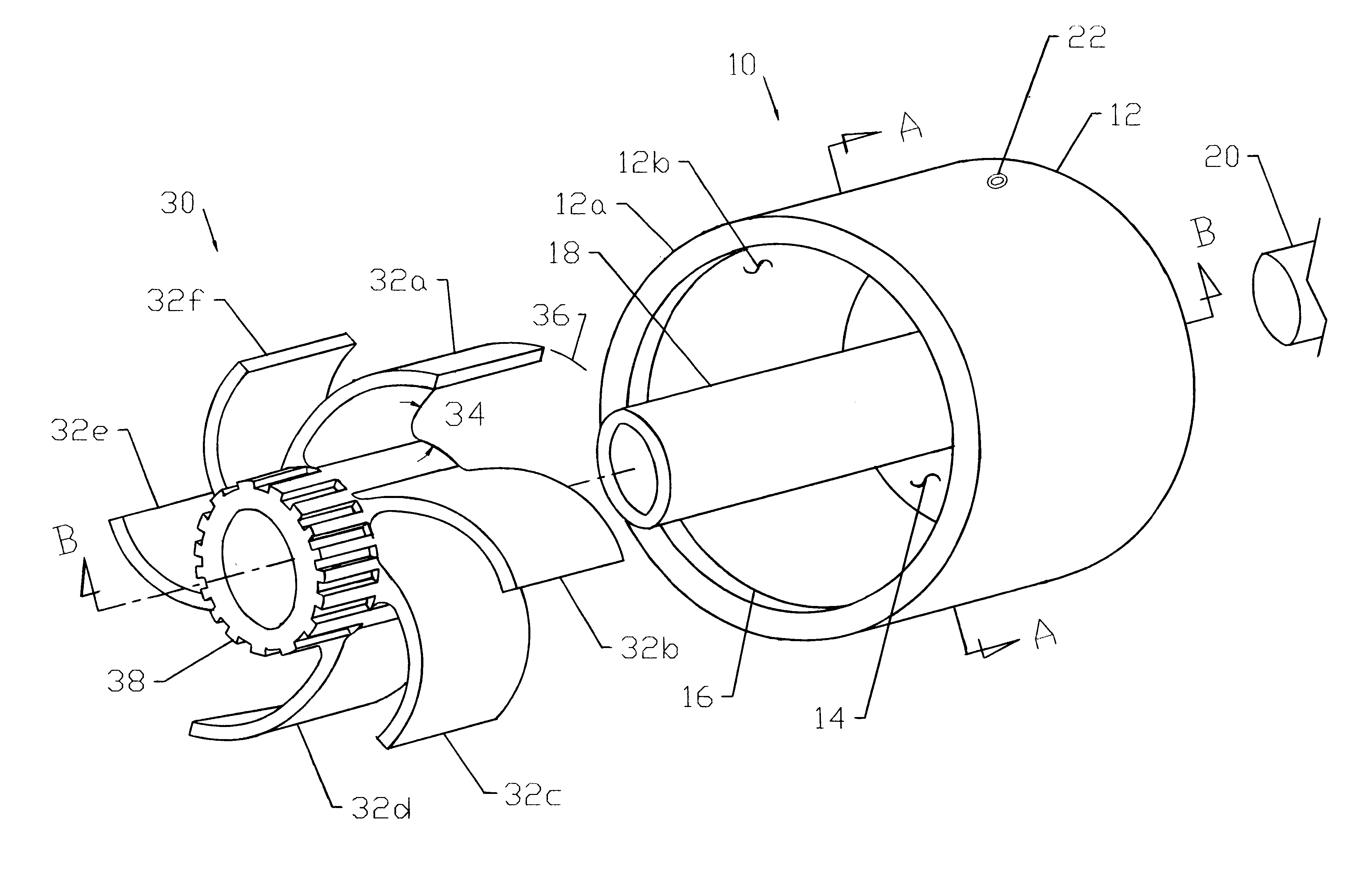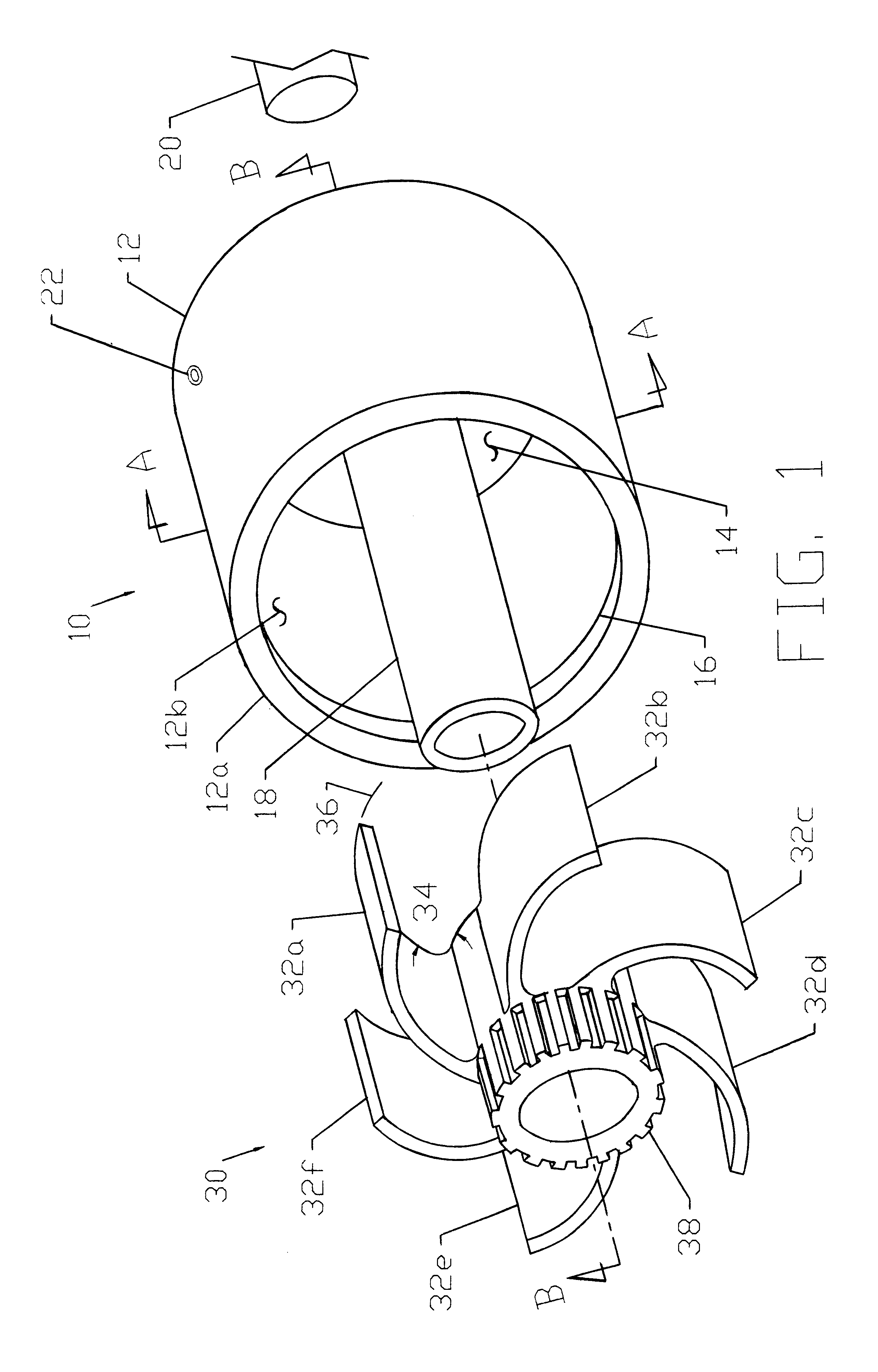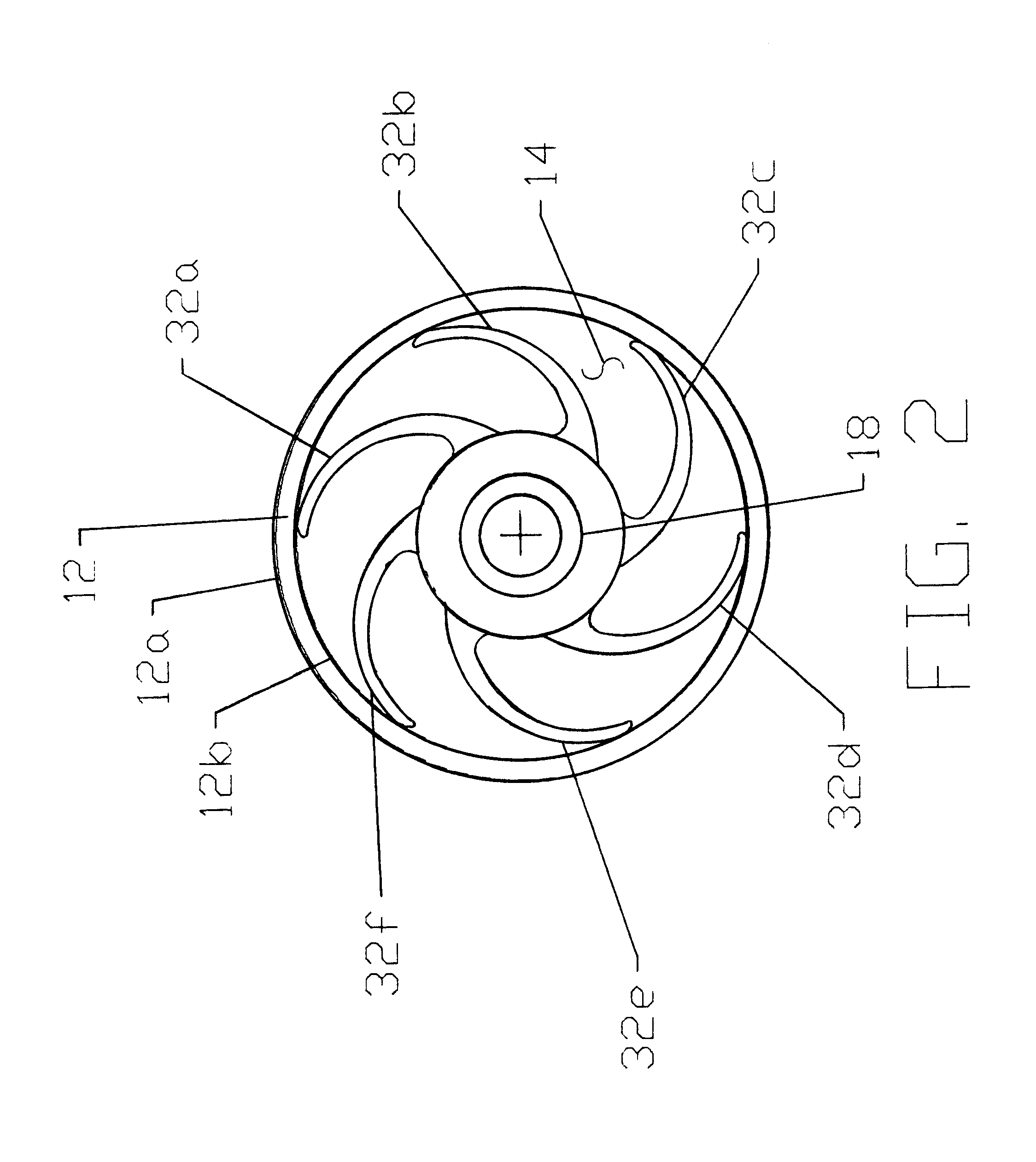Flexible vane coupling
- Summary
- Abstract
- Description
- Claims
- Application Information
AI Technical Summary
Benefits of technology
Problems solved by technology
Method used
Image
Examples
Embodiment Construction
. 1-3
A perspective view of a typical embodiment of the clutch is shown in FIG. 1. The device comprises a housing and shaft assembly 10. The housing assembly 10 consists of a cylindrical shell 12 with an outer diameter 12a and an inner diameter 12b. Also comprised in the housing and shaft assembly 10 is a rear surface 14, a shoulder 16, and a shaft 18. The housing assembly 10 is preferentially made from die cast zinc. All surfaces have smooth "as cast" finishes. The shaft 18 is formed onto the rear surface 14 and extends beyond the cylindrical shell 12. The shaft 18 is hollow to allow for mounting the clutch to an external drive shaft 20. Attaching the housing assembly 10 to the drive shaft 20 can be accomplished with a set screw 22, interference press fit, keyway, or spline.
The shaft 18 could also be made from a separate piece of material and mounted into the rear surface 14 of the housing and shaft assembly. In this case, the material could be carbon steel for additional strength.
T...
PUM
 Login to View More
Login to View More Abstract
Description
Claims
Application Information
 Login to View More
Login to View More - R&D
- Intellectual Property
- Life Sciences
- Materials
- Tech Scout
- Unparalleled Data Quality
- Higher Quality Content
- 60% Fewer Hallucinations
Browse by: Latest US Patents, China's latest patents, Technical Efficacy Thesaurus, Application Domain, Technology Topic, Popular Technical Reports.
© 2025 PatSnap. All rights reserved.Legal|Privacy policy|Modern Slavery Act Transparency Statement|Sitemap|About US| Contact US: help@patsnap.com



